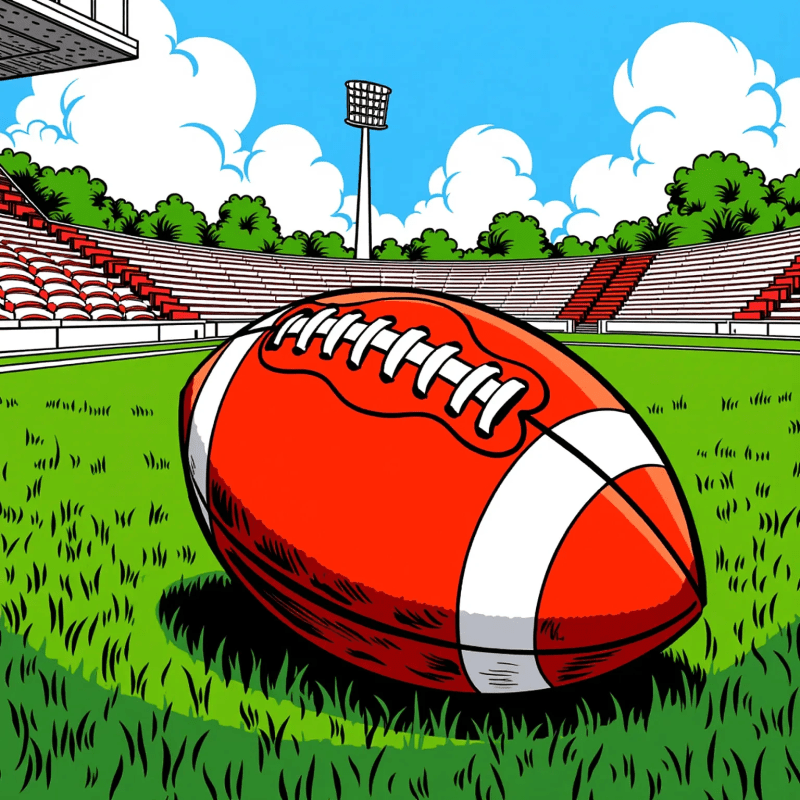Flag football is an exciting way to enjoy the game without the heavy contact. If you're new to the sport, it’s all about teamwork, strategy, and having fun. Understanding some basics will help you get started and enjoy the experience even more.
First off, the main goal in flag football is to score points by reaching the opposing team's end zone. Instead of tackling the player with the ball, defenders pull a flag from the ball carrier’s belt to stop the play. This makes it a safer option, perfect for beginners of all ages.
Each team typically has 5 to 7 players on the field, depending on the league rules. The game is played in four quarters, and teams switch sides after halftime. A series of plays is called “downs,” where the offense has four attempts to advance 10 yards. If they do, they get a new set of downs!
You’ll also want to brush up on some basic skills. Passing and catching are vital in flag football. Encourage players to practice their throws and hand-eye coordination. Running routes is another key skill — these are specific paths that a player runs to help the quarterback know where to throw the ball. Simple drills can make these practices fun and effective!
Fun Drills to Build Team Skills
Building team skills is key for any flag football squad, and having some fun while doing it is a must! Here are a few enjoyable drills that will not only boost skills but also create a awesome team atmosphere.
1. Relay Races:
Split the team into two or three groups. Have them compete in a relay race where each player has to complete a specific task, like running with a ball and doing a quick flag pull. This drill encourages teamwork and gets everyone moving. Plus, who doesn't love a little friendly competition?
2. Flag Pulling Tag:
This game is a twist on classic tag. One player is 'it' and has to pull flags from others while avoiding getting their own flags pulled. This helps players learn how to maneuver and evade while improving their flag-pulling skills. It's fast-paced and loads of fun!
3. Three-Man Weave:
In this drill, three players pass the ball back and forth while moving down the field. The key is to keep moving and communicate. It’s not just about passing; it's about learning teamwork and reading each other's movements. Plus, it’s a great way to work on those catching skills.
Add these drills to your practice and watch your flag football team not only improve their skills but also grow closer together. Teamwork makes the dream work!
Improving Your Speed and Agility
1. Ladder Drills: Using an agility ladder, you can work on quick foot movements. Simple exercises like high knees, lateral shuffles, and in-and-out steps help enhance your coordination and speed. Try doing these drills for 15-30 seconds at a time, with short breaks in between.
2. Cone Drills: Set up cones in a pattern and practice running around them. For instance, you can set them in a straight line or in a T-shape. Focus on sharp cuts and maintaining speed as you switch directions. This will mimic the movements you'll often make during a flag football game.
3. Sprints: Nothing beats good old-fashioned sprinting. Find a clear area and mark a distance of about 30-40 yards. Practice running at full speed and then take a break. Repeating this a few times helps you build endurance while increasing your maximum speed.
Consistency is key. Try to work these drills into your practice schedule a few times a week. You’ll notice improvements not just in your speed and agility, but in your overall flag football skills. Happy practicing!
Game Situations to Practice Together
When it comes to flag football, practicing game situations together can really boost your team's performance. These drills help new players better understand how to react under pressure and improve their overall game strategy. It's all about learning what to do in real game scenarios!
One fun drill to try is a two-minute drill. Set a timer for two minutes and challenge your team to move the ball down the field for a touchdown. This simulates those nail-biting moments at the end of a game. Players will get practice making quick decisions, communicating effectively, and executing plays under time pressure.
Another great exercise is the 4-on-4 scrimmage. Break your team into smaller groups and play a mini-game. This helps players understand how to work together, blocking, passing, and using their flags strategically in a more relaxed setting. Plus, it’s a great way for everyone to get comfortable with their roles on the field.
Consider adding a red zone challenge to your practice. Place markers to designate the red zone, and then have the offense try to score while the defense works to stop them. This focuses on both offensive plays and defensive strategies, giving everyone a chance to shine and learn. By simulating real game situations, players will feel more prepared when it's time to get out there and face their opponents.

